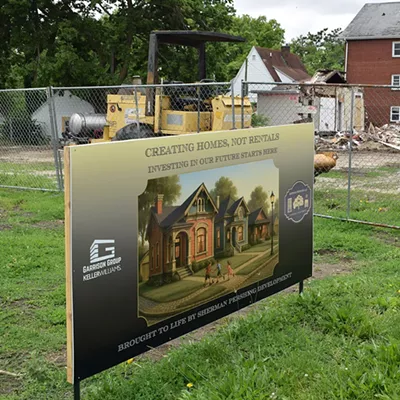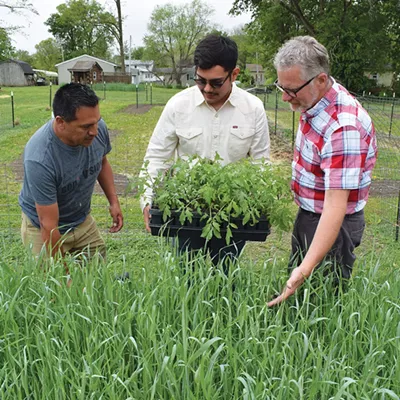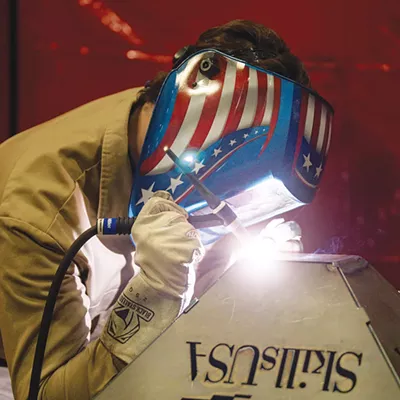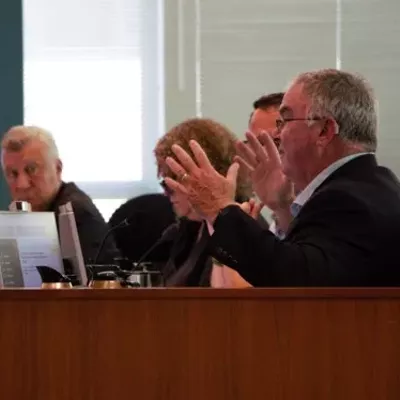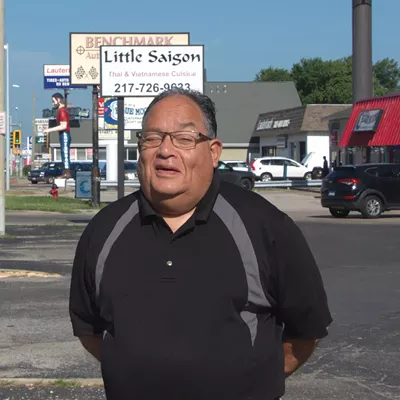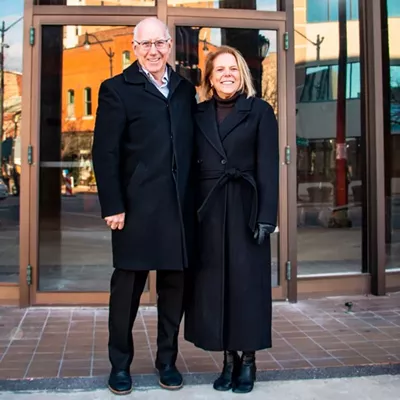By David Blanchette
Paul O’Shea is a Springfield native who has left his mark on his hometown through a variety of historic preservation projects and extensive community involvement. After graduating from University of Illinois Urbana-Champaign with a degree in architecture, he returned to Springfield and was involved in the reconstruction of the Old State Capitol. He has also been heavily involved in downtown revitalization efforts, whether working in an official capacity or serving as a volunteer. In addition, he helped create the Historic Preservation Fund, which is managed by the Community Foundation for the Land of Lincoln.
What was it like for you growing up in Springfield? I grew up in a great family and in what I would call a normal neighborhood. I am the youngest of four brothers. Our parents gave us a strong religious upbringing, which I carry with me today. My mother should be a saint for taking care of four boys.
My father ran John O’Shea Builder, the construction company that his father founded at the turn of the century. He eventually changed the name to Harold O’Shea Builder. My brother Bud began working on job sites shortly after grade school; he loved the business. Then his son, Mike, picked up the business and is currently president of O’Shea Builders.
My brother Pat moved to Massachusetts to work with Mass Mutual where he has climbed to the senior ranks, and my other brother is Father James O’Shea, who is a retired priest with the Diocese of Springfield in Illinois.
How did your architectural career begin? I played baseball in high school and wanted to play baseball in college, but my father felt I had artistic abilities and should consider studying architecture at University of Illinois Urbana-Champaign. I told my father I would give it a shot.
When I was home from college for the summers, I worked as a draftsman for Hadley and Worthington in the Myers Building, which overlooked the Old State Capitol. When I graduated in 1961, I worked for them for a few years and then took the advice of a college professor and moved to Bloomington, where I worked with Lundeen and Hilfinger.
In order to get to know some people in Bloomington, I joined the Jaycees, and that was the start of my community involvement efforts that have been a big part of my life ever since.
You returned to Springfield in the mid-1960s to work for the architectural firm of Ferry & Henderson when they started reconstruction work on the Old State Capitol. What was it like working on a project that has direct ties to Abraham Lincoln’s life? I was asked to do a cost estimate of the reconstruction project and I had to dig to find the necessary information. When I presented the figures to Don Ferry and Wally Henderson, it was clear that they would need to request more funds to finish the project. Fortunately, they were successful in presenting the estimate, and the firm received several million dollars to keep the ball rolling until the project was completed.
When I hear comments from people from all around the world about Abraham Lincoln’s life, or I see a television program or read a mention in a national publication about Lincoln and his time in Springfield, it reminds me of how important that work was, as well as my work on the Abraham Lincoln Presidential Library and Museum. It’s an extremely good feeling to know that I had some engagement with those projects, and indirectly, with Abraham Lincoln’s life.
Later in your career you worked with several other firms that had an impact on the look of downtown Springfield as we know it today. How did that come about? I was great friends the late Tim Davlin before he was mayor of Springfield. In fact, after I read in the newspaper that he was running for mayor, I called him to say that we needed to get together and talk. We did, and after the election he asked me to come on board as the city planner and design coordinator.
Davlin wanted to create an emerald city in Springfield. We traveled to Ireland to study the green spaces and the beauty to see what ideas we could take back to Springfield. Davlin envisioned a livable, walkable community that would attract people – a place where people would want to live, work and play. From that experience, we were able to do many landscaping programs.
What advice would you give to the younger generation? Get engaged in programs that you enjoy. The more you learn, the more valuable you become, and then you are able to contribute more. Life isn’t just about what you can do for yourself, but what you can do for others and for your community. To quote Mark Twain, ‘Find a job you enjoy doing, and you will never have to work a day in your life.’
Have faith in God, and let that faith extend to others as you follow through with your life.
As I look back on life at the age of 84, my good health comes from doing what I enjoy. Leading a good life is very important.
What do you enjoy doing in your spare time? I enjoy sports, especially baseball. It seems that (professional) players now don’t play as much for the fun as they do for the money. I think they have lost that true baseball feeling. I saw more than 20 Springfield Sliders games this year; it’s a way for me to chill out.
I enjoy being with people, and that’s been a challenge over the past year. I enjoy working on committees and exchanging ideas with others – that’s important. And I thoroughly enjoy being with my family, and my wife is with me all of the time, and that is really very important. I’ve enjoyed recently reconnecting with family who are in different parts of the country.
David Blanchette knows a thing or two about Abraham Lincoln after working with the Illinois Historic Preservation Agency, Abraham Lincoln Presidential Library and Museum and the Illinois Abraham Lincoln Bicentennial Commission.


